
Cleaning windows is not an easy task.
On top of that, properly cleaning windows – like the pros does it on TV – seems almost impossible for us. No matter how hard we try, we’re always greeted by water stains and spots – right after we thought that we did a great job!
Even though you’re the proud owner of a portable washer from Pressure Washer Lab and think that such a tool may be better for cleaning windows, we don’t recommend you that. While a pressure tool can help you with the rough cleaning that has to be done around the house, windows need a different approach!
Therefore, in today’s article, we’ll teach you some of the techniques that you can use to clean windows like the pros!
Spray Bottle and Paper Towels
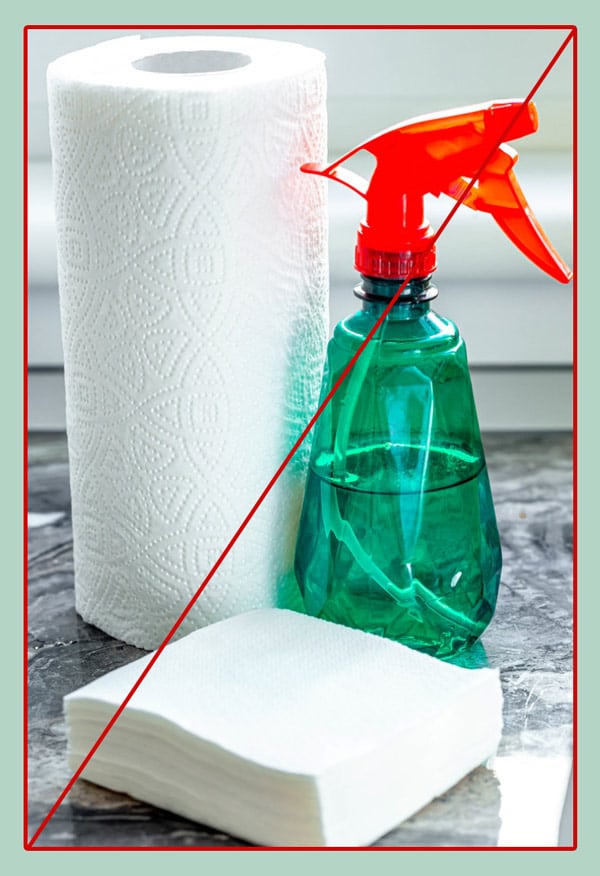
First of all, it is worth mentioning that you should start by ditching the good-old spray bottle and the paper towels that you may have gotten used to. They are highly ineffective and will only increase the number of water stains that appear on your windows. – compared to the tools that we are going to talk about shortly.
List of The Proper Equipment for Window Cleaning
In order to clean your windows like the pros, you don’t need any fancy tools or equipment that would put a rather big hole in your pocket. In fact, the only things that you need may already be present in your home or found at the closest convenience store!
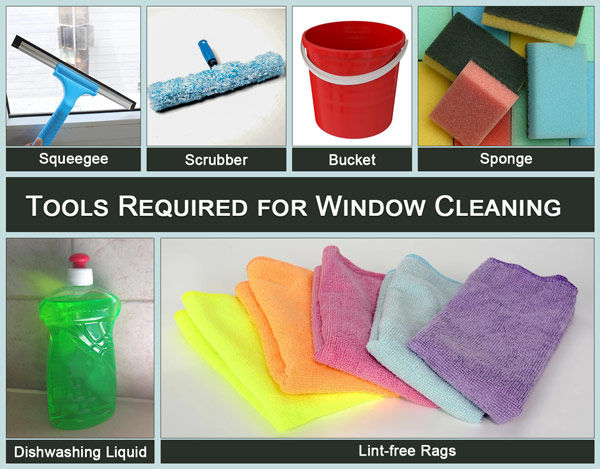
On top of that, there’s no secret ingredient or tool that the pros use. Everything you need can be found in full-service hardware stores or at home centers!
- First of all, you need a 10- or 12-inche squeegee – this is one of the most basic tools that you need for proper window cleaning.
- Naturally, you also need a scrubber.
- Then, almost any type of bucket will do – but it should have a capacity of at least 5 gallons.
- Also, you don’t need any special type of liquid; all you have to use is hand dishwashing liquid!
- Lastly, you’ll need a couple of lint-free rags or you can use some small towels.
Beginner Tips and Tricks for Window Cleaning
Make sure that your squeegee is always fitted with a new and sharp rubber blade – you can have two or three as a backup. Pros that work in the industry usually change the rubber blades once a day.
You may find yourself doing so as well, mainly because the squeegee won’t do a good job if the blade’s edge gets sliced, nicked, or rounded. For example, when you notice that your squeegee isn’t performing properly – leaving streaks -, then it’s time to change the blade.

However, if you want to increase the lifespan of a rubber blade, you can simply reverse it and expose its fresh and unused edge –, “this is a pro tip”
Moreover, keep in mind that nothing should touch the blade when you store the squeegee so that it doesn’t get damaged.
Technique and Skills Required to Clean Window Like A Pro!
First of all, let’s take the cleaning out of the way – it may not be complicated, but it’s an essential aspect when it comes to professional window cleaning!
- To a couple of gallons of water, you should add roughly a teaspoon of dishwashing liquid. There are also people who like to use only vinegar and water to clean their windows – which is as good as dishwashing liquid.
- When it’s warm outside, you’ll enjoy more working time if you use cool water.
- On the other hand, if you plan to wash your home windows in below-zero temperatures, then you should add wind-shield washing solution so that the water doesn’t freeze on the window’s glass.
When it comes to the main tool, you can use either a scrubber or a sponge. Even though a scrubber works great and can be a wise investment – especially if you have medium to large panes of glass -, a high-quality sponge is pretty much all you need!
Now, let’s move to the specifics of the technique that you should approach when cleaning windows:
- As a starting point, you’ll have to dip the scrubber or the sponge in the bucket and then squeeze any excess water.
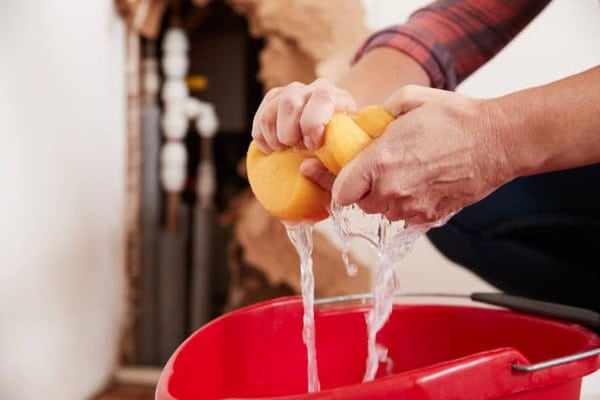
- Now rub the window glass with this wetted sponge or scrubber.
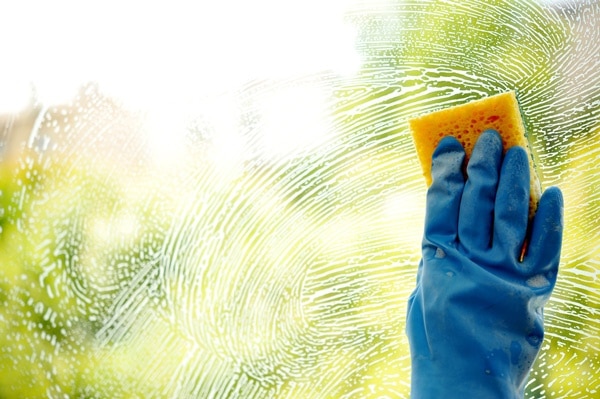
- The next step implies scrubbing the glass, making sure to work at all angles so that you clean the edges as well. An effective way is to move the squeegee horizontally across the window. If you work vertically, then the squeegee should be angled to direct any excess water to the dirty area.
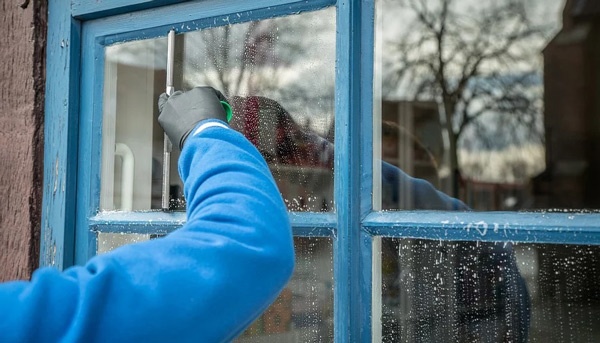
- Then, to start cleaning a starting strip, you have to tip the squeegee so that only one of its corners touches the glass. Starting at the top corner of the window, clean a narrow strip, from top to bottom. The clean strip will later help you start the horizontal strokes easier.

- The squeegee blade has to then be pressed against the glass, in the window’s upper corner. Then, pull the squeegee steadily across the glass. Make sure to keep the squeegee’s top in contact with the window’s top edge.
- You should also regularly wipe the squeegee’s blade on a clean towel – or simply across the scrubber -, in order to remove excess water and dirt.
- You’ll then start working down the window. This implies starting again – the squeegee’s top overlapping your previous stroke with about 2 inches. The squeegee has to be pulled across the window – at an angle – so that the excess water is directed down. Wipe the squeegee and repeat the procedure.
- When it comes to wiping excess water, you’ll use a rag. Start by wiping the water along the window’s bottom edge. Then, find a dry spot on another lint-free rag and point your finger into it. After doing so, run the rag around the window’s perimeter in order to remove any suds. Any streaks should be wiped off using a lint-free rag – naturally, you should change rags when they run out of clean areas.

The Bottom Line
As you can see, there are no secret cleaning tools or substances / liquids that you have to use in order to clean windows like the pros!
All you need is mastery over the technique described above. It may look very easy, but it takes some time to learn properly – don’t expect to clean your windows spotless on your first try!
Still, this is everything that you need to know to clean windows like a pro and say goodbye to smudges! We have also tried to give some pro tips for other elements and furniture of home to read more please click on following links:
Rugs & Carpet Cleaning Tips for Your Home
12 Cleaning Tips to Make Your Bathroom a Cleaning Breeze!
False Ceiling Cleaning Tips!
Diwali Cleaning Guide for your Home
Tips to Clean Clogged Drain (Toilet, Sink Sewer Pipe)
3 Benefits of Gutter Cleaning that You Never Knew Existed!


































